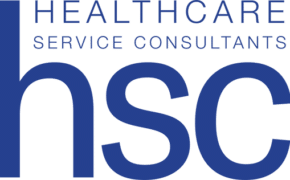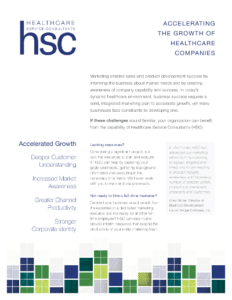Table of Contents
You have spent countless hours and significant dollars building your health IT innovation. And rightly so. You want to realize as much revenue as possible from all that hard work.
Pricing is a difficult tightrope to walk. On one hand, your product should be priced in a way that is reflective of the value it offers. On the other, healthcare is a highly-price sensitive market and you don’t want to price yourself out of the competition.
Here are three steps to developing an effective pricing strategy. Use them to maximize returns from your investment of time, effort, and intellectual property.
1. Build a Value Matrix
The first (and most important) step in building a competitive pricing model is to quantify the value your innovation offers. You need to map your product’s value propositions to tangible dollars-and-cents benefits the customer will realize as a direct result of adopting your solution.
It’s likely you have already mapped your user personas and their problem statements to your product’s value propositions and features. This is vital for informing product design and marketing communications. To turn this into a value matrix, take this one step further. Map your product’s differentiators to tangible value in terms of new revenue generation and/or cost savings.
In some cases, this can be quite simple. For instance, if your innovation promises to improve physician productivity, how many more patients could they see? How many more procedures can they bill during this reclaimed time? If improved clinical outcomes will lead to reduced length-of-stay or readmissions, how much cost does that avoid? And are there any associated incentives associated with these types of improvements that could be realized?
In other cases, this can be more challenging. There are many qualitative benefits in the healthcare world that cannot be directly measured. Yet, they can be significant drivers for improvement programs and budgets. The trick is to find the correlating measurable revenue or cost savings opportunities that exist. For instance, physician satisfaction could be quantified by:
- turnover cost
- lost revenue due to decreased productivity
- cost of errors related to burnout
You already work with your customers to define personas, problem statements, and validate product designs. You should also involve them in identifying the biggest value propositions your product has to offer. Then, map these to the associated tangible benefits. After all, who knows better than your customers what the most important and attractive features of your innovation are? And what they’re ultimately worth? They can even surprise you with new ways your innovation generates value; ways you may have not yet considered.
2. Packaging
The next step is to determine how best to bundle your various features and services in a way that maximizes value for each target market segment. Not all customers in the healthcare realm are created equal. The needs of large hospital systems, HIEs, and IDNs vary significantly from community hospitals, independent clinics, and specialty practices.
Effective packaging begins early in the design phase. Identify those features or services that augment the value of your core product by appealing to new user personas and workflows or unlocking a new revenue or cost avoidance opportunity. These should be built in a modular fashion that simplifies the adoption and upgrade process.
It is critical that you bundle these features in a way that makes sense to the target audience. They also need to add incremental value to your overall solution by addressing additional distinct problem statements (rather than diminish the value of your core solution when absent). The difference is nuanced but pivotal to creating a successful packaging strategy. Key considerations include:
- the degree to which customers perceive the feature to be essential for their day-to-day operations
- the ability of the feature to deliver a return on investment that can be independently quantified
- the degree to which the feature is considered novel
- how your competitors are bundling similar offerings
3. Determine Pricing Models and Points
There are two core components to product pricing:
- the pricing model—what, specifically, you are charging for and how it will be billed
- the price point—the amount that you will charge for your products and services
First, when determining which pricing models and points are most appropriate for your innovation, it is important to consider your target customers’ budget and revenue models. Understanding whether your customer has better access to capital or operational budgets is an important initial consideration to mitigate any budget-related barriers to procurement.
Additionally, it should align with the value quantification model as outlined in your value matrix. For instance, if value is largely derived through reimbursements, then a per-procedure/encounter/study pricing strategy might be most effective.
Conversely, if your innovation adds value for a specific medical subspecialty or workflow, then a per-seat model would be most appropriate. Other considerations include:
- volume-based tiering that allows your customers to benefit from economies of scale,
- targeted promotions that can help drive a purchasing decision, and
- incentives for those products that need market access, traction, and credibility.
Typically, you determine price points after choosing a model. You should base these on the quantified amounts from your value matrix. While many number of factors that play into effective pricing, the biggest factor is the competitive landscape.
For novel innovations, where there is little if any competition, you are not encumbered by pre-determined pricing biases. In this case, as a general rule of thumb you should be able to price based on a percentage of the net-new realized gains.
Where the competitive landscape is more mature, your customers will be benchmarking and comparing prices. You should base your price point on the incremental value potential between your product and your competitor’s. And, you should be able to justify a price that amounts to about half of the delta in incremental revenue and/or savings.
4. Marketing and Selling in a Price-Sensitive Market
While pricing is pivotal to achieving your sales and revenue targets, it is a poor marketing tool. Advertisements evangelizing discount pricing rarely communicate quality and value. Instead, ensure your marketing communications and sales discussions focus on the problems your solution solves and the benefits your customers can realize. Then, let pricing discussions flow naturally from there.
Healthcare is a highly price sensitive market, which is why it is essential to base your price on demonstrable value-based metrics. So, regardless of what your competitors are charging, you can substantiate your cost-benefit proposition. When product, pricing, and marketing strategies work hand-in-hand, you are best positioned to maximize your own return-on-investment.
Photo by Micheile Henderson on Unsplash




